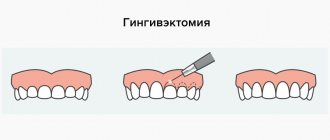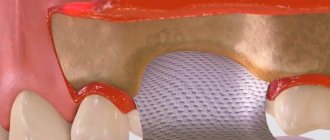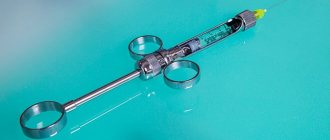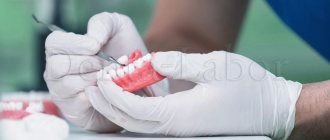In this article you will find out whether snails have teeth and how many of them there are in different species, what these creatures eat, what are their unique features and how they differ from other earthly creatures. We are, of course, not Wikipedia, but we will give detailed answers to the most interesting questions. Many interesting discoveries await you. Let's get started.
Land snail. Photo by: katiedee47
Spoiler: a snail has a lot in common with a shark, a chicken, a snake, an ant, and even a bulletproof vest. And it's not just about the teeth.
Snails (gastropods) are unique creatures with unusual anatomy and physiology. This is one of the most ancient species on Earth, which appeared about 500-600 million years ago. There are more than 100,000 species in the world; in Russia there are about 1,600 species. Gastropods, despite their harmless appearance, can also be predators. And although snail teeth can only be seen under a microscope, they are there. And if mollusks have only one leg, the number of teeth they have can be in the tens of thousands.
What is a mollusk shell?
The shell is an integral part of any snail. Thanks to the external skeleton, the latter can protect itself from attacks by natural enemies and from the influence of other natural factors from the outside. The sink also helps retain moisture.
The external skeleton resembles a cone. By the way, it is precisely because of this shape that the organs of the cochlea are located asymmetrically. The upper layer of the skeleton is usually smooth or has small growths.
Where hasn't a snail gone before?
From zoology lessons we know that the delicate body of a mollusk is hidden in a protective shell. All the vital organs are hidden in the shell, and only the funny snail’s head and flat belly peek out from the house.
Achatina crawls slowly, smoothly and very impressively. Young mollusk fishermen often ask how many legs does a snail have? This question can be safely answered – one.
The abdomen, with the help of which the exotic beauty moves along the ground, is called the snail’s leg. Alternate muscle contraction leads to wave-like movement of the sole. The mucus secreted by the individual facilitates gliding and reduces friction of the snail's leg on various rough surfaces. If you conduct an experiment and run a clam along the blade of a knife, it will not get hurt, but will gently envelop it.
How many legs does a snail have? To answer this question, you can send your pet on a journey through transparent glass. On the reverse side, you will see how the muscles of the flat stalk contract, and the mollusk strives to explore a new unknown space.
The snail's foot has completely unique properties. She can overcome any surface without harming herself. Extreme experimenters tested what would happen if a snail was hit by a blade.
Do snails have teeth?
Surely, some of us have been interested in this question at least once. It is known that mollusks are both herbivores and predators. In this case, snails must have teeth, otherwise how else can they chew food?
That's right, they have them. A photo of the snail's teeth can be seen below.
They are located directly on the tongue, which the mollusk uses to cut and grind pieces of food. Scientists can also easily examine a snail's teeth under a microscope.
It is worth noting that the teeth of mollusks are not exactly what we imagine in the traditional sense of the word. All representatives of gastropods have a special organ in their mouth - the radula. This is the analogue of the tongue and teeth that we talked about earlier. It is noteworthy that in poisonous snails the radula cavity also plays the role of storing poison, which is secreted from a special gland.
What about quantity? The count goes into the thousands, and usually everything depends on the size of the mollusk itself. So, for example, to the question of how many teeth the Achatina snail has, the correct answer is 25,000. This is despite the fact that Achatina snails are real giants among their relatives. In small mollusks, the minimum number is usually about 10,000 teeth.
What does a snail's mouth look like under a microscope?
It's hard to believe that such a small mollusk has so many teeth. Namely, up to 25 thousand pieces. It’s even more difficult to imagine where they fit and what dimensions they have.
The teeth can be thin, even, curved
It is impossible to see the teeth with the naked eye. This requires a microscope. Just look at a photo of your teeth. As a rule, it is difficult to call what you see teeth. Outwardly, it resembles a rough tongue. From a scientific point of view, these are teeth.
Mollusks are unique animals
During the research, interesting facts were revealed:
- the shape is significantly different. The teeth can be thin, even, curved;
- the arrangement is flat, in rows. The number of cloves per row depends on the species in question;
- Over time, the teeth wear out. However, others appear in their place. This happens all the time.
This subspecies of animals does not bite off food, but scrapes it off. For this reason, the cloves are compared to a grater.
Snail in the wild - where does it live?
Almost any climate and all continents are suitable for living in mollusks. The only exceptions are Antarctica and hot deserts. Some mollusks can be found in the Pacific Ocean, throughout the Mediterranean and even in the Arctic Ocean.
The most comfortable places for these creatures are: Europe, Africa, America and Australia. Very often they can also be found in the territories of Asia and Russia.
To keep the bodies of mollusks from drying out, they need to consume a lot of moisture. That is why they live very comfortably in places with high humidity.
Let's look into the eyes of Achatina
In funny cartoons, Achatina eyes are drawn on long thin horns. Many breeders are of the opinion that the organs of vision of mollusks are located at the base of the antennae. But this is an erroneous opinion, and the time has come to figure out where Achatina’s eyes are?
It is known for sure that gastropods have poor vision and can only see objects at a distance of a few centimeters.
Mollusks perfectly distinguish between light and darkness and can react to bright flashes not only with their eyes, but with their whole body. Experienced owners leave part of the aquarium in the shade when installing lighting. With a constant stream of bright light, the hives will constantly bury themselves in the ground and hide from external stimuli.
In cartoons, the head of a snail is correctly depicted; the eyes of the mollusks are located on thin horns and are almost invisible. On the head of the Achatina snail, where the eyes are concentrated, thousands of light-sensitive cells are concentrated. They form the lens, which is attached to the optic nerves. Babies have a limited angle of vision, and moving eye barrels help them better see various interesting objects.
Tips for those who want to start breeding snails at home
In the previous chapter, we talked about what you can feed any snail. In order for her to grind all this, there must be enough calcium in her teeth. If there is a deficiency, the mollusk will begin to sharpen its own shell.
All this will end with the complete destruction of the protection and, as a result, the death of the snail. Calcium deficiency can be prevented with the help of special tablets or crushed eggshells, which will be used as food.
If the snails are kept in an aquarium, they can be fed fish food, special plants, algae tablets and finely chopped vegetables. It is strictly forbidden to give shellfish human food. It is also worth paying attention to the fact that there are never any newspapers nearby. If a snail eats paper, then after such a feast it can no longer be saved.
To prevent the aquarium from losing all its vegetation, you will have to control the number of your pets. A small amount will do an excellent job of destroying all the rot that accumulates over time.
Can a snail bite?
Whether a snail bites or not is a question that worries many. It is especially relevant in relation to Achatina. The size of this snail is impressive; for many it has become a favorite pet. Achatina is often used for medicinal and cosmetic purposes. Seeing a huge snail, many are afraid of its bite.
Snails cannot bite a person; they have a completely different structure of the chewing apparatus.
However, many have noted a slight tingling sensation when Achatina crawls over a person’s body. Why is this happening? The answer is simple - snails are often picked up after they have been given food. While moving, she smells food and tries to “scrape” it in this place. It feels like running sandpaper over your skin.
This property of mollusks is used in cosmetology. For example, cucumber juice is applied to the places where the procedure is performed, which attracts Achatina and stimulates its “work”.
About life expectancy
Despite the fact that snails have very good stress resistance, they live a maximum of only 25 years. Being in nature, mollusks run the risk of being killed, which means that their life expectancy in such conditions is noticeably reduced.
For example, a grape snail can live safely for up to twenty years. As for living in the wild, its life expectancy is usually only eight years.
By breeding snails in captivity, you can expect them to live a really long life. Naturally, you should not neglect the simple rules of care and feeding.
Nutritional Features
Many people are interested in the care, nutrition and reproduction of snails. Gastropods feed on solid food and have herbivores and carnivorous mollusks. The type of food and diet depends on the species and habitat. For example, grape snails and Achatina eat fruits and vegetables, herbs, cereals, legumes, dandelion leaves, nettles, and grapes. However, mollusks do not refuse softened bread, mixed feed, eggs and minced meat.
How to feed snails. Marinades, pasta, citrus fruits, and smoked foods are prohibited. Food should be washed and preferably chopped before serving; food should be at room temperature. You also need water.
Just in case: although snails love to eat delicious food, dyes, flavors and spices, especially salt and sugar, should not be added to their food.
On a note:
- young individuals need to be provided with round-the-clock access to food;
- When feeding snails, it is important not to give them large portions of soft food - they can bury themselves in it and suffocate;
- If you habituate an animal to one type of food, it may subsequently refuse another food.
Predatory snails at home are fed either smaller snails or bloodworms, brine shrimp, and food containing protein, such as sinking catfish tablets.
Snail feeding in the natural environment
In the wild, the diet of mollusks also depends on the species and habitat. Herbivorous snails eat greens, grass, leaves, tree and plant bark, berries, fruits, and vegetables. If we talk about predators, their diet is also varied - from carrion, other mollusks and insects to worms and fish.
Historical data
The habitat of Achatina is the equatorial part of East Africa. Not without human help they moved to Madagascar, Seychelles, India, and Sri Lanka. In Indochina, they spread throughout the entire territory in just 10 years.
Once in the United States, they managed to destroy most of Florida's farmland in a few months. Every effort was made to destroy them. Because of this, Achatina is prohibited from being brought into the United States and kept as pets. Violators of the ban face a five-year prison sentence and a huge fine.
India and Taiwan faced the same problems. Hindus destroy millions of snails every year. However, local residents of these countries began to eat them with pleasure, inventing various dishes. Achatina soup is popular in India as a healing remedy for lung diseases.
Dimensions
Achatina are considered the largest land snails.
Many people are interested in how big they can grow. Their eggs reach 5 mm in diameter. The hatched babies grow very quickly and are on average about 15 cm in length. In nature or in good conditions, very large specimens are found - up to 25 cm, while their shell can reach 30 cm. Table of snail growth by month:
| Month | Size |
| 1 month | 1 - 3 cm |
| 2 months | 2 - 7 cm |
| 3 months | 3 - 10 cm |
| 4 months | 4 - 10 cm |
| 5-12 months | 5 – 14 cm |
| 1 year | reach maximum growth and stop growing |
Are there any contraindications to snail therapy?
No negative effects of Achatina mucus on the human body have been identified.
In 1980, Japanese scientists tried to use living Achatina in cosmetic procedures. The effect was amazing. The mollusks very delicately scraped the skin with sharp teeth, removing only the keratinized cells of the epidermis and at the same time lubricating it with life-giving mucus.
In domestic clinics and beauty salons, snail therapy has recently begun to gain popularity. For many, the sight of a snail causes a feeling of disgust. And if the individual is large—about 30 cm long—then there is also a feeling of fear. But Achatina’s teeth bring only benefits to human skin. In fact, these mollusks are friendly, healing creatures - doctors by nature.
5 / 5 ( 2 voices)
Behavior
All species of Achatina are nocturnal animals. During the day, they can crawl out only in damp, cloudy weather. They are able to remember their actions for one hour and return to the places where they found food.
Young individuals are more nimble and fearless, while older ones prefer to hide in secluded places and crawl out of the shelter only to search for food. Achatina perfectly recognizes its owner and reacts to him, freely crawling along his hands.
You can learn how to handle and care for these cute animals in our section Contents and Care.
How do domesticated Achatina bite?
Anyone who has decided to have an Achatina for the first time may be keenly interested in the question - is such a seemingly defenseless pet capable of painfully biting a person’s finger? There is no reason to worry, Achatina are absolutely peace-loving animals. If you bring your finger close to the clam’s mouth, the skin will feel suction and pleasant scrubbing. Achatina's teeth do not cause any harm to a person.
In China, Japan and Europe, Achatina is widely used for cosmetic and therapeutic procedures. The rejuvenating effect of Achatina after contact with teeth was first thought of in Chile. 90% of workers at one of the largest local snail farms noted that skin abrasions heal faster if they were “licked” by snails. And some noted that after the procedures, small scars disappear. After this discovery, the mucus secreted by Achatina began to be used in many burn centers around the world.











